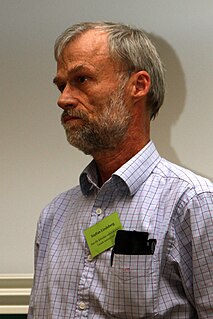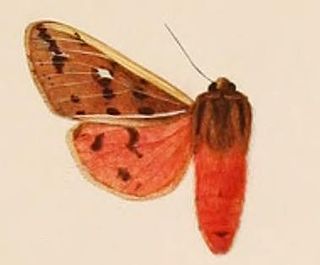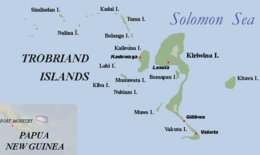
Papua New Guinea, officially the Independent State of Papua New Guinea, is a country in Oceania that comprises the eastern half of the island of New Guinea and its offshore islands in Melanesia. Its capital, located along its southeastern coast, is Port Moresby. The country is the world's third largest island country, with an area of 462,840 km2 (178,700 sq mi).

Melanesia is a subregion of Oceania in the southwestern Pacific Ocean. It extends from Sumba in the west to Tonga in the east, and includes the Arafura Sea and a few thousand islands.

Bronisław Kasper Malinowski was a Polish-British anthropologist whose writings on ethnography, social theory, and field research have exerted a lasting influence on the discipline of anthropology.

The Trobriand Islands are a 450-square-kilometre (174-square-mile) archipelago of coral atolls off the east coast of New Guinea. They are part of the nation of Papua New Guinea and are in Milne Bay Province. Most of the population of 12,000 indigenous inhabitants live on the main island of Kiriwina, which is also the location of the government station, Losuia.

Kula, also known as the Kula exchange or Kula ring, is a ceremonial exchange system conducted in the Milne Bay Province of Papua New Guinea. The Kula ring was made famous by the father of modern anthropology, Bronisław Malinowski, who used this test case to argue for the universality of rational decision-making and for the cultural nature of the object of their effort. Malinowski's seminal work on the topic, Argonauts of the Western Pacific (1922), directly confronted the question, "Why would men risk life and limb to travel across huge expanses of dangerous ocean to give away what appear to be worthless trinkets?" Malinowski carefully traced the network of exchanges of bracelets and necklaces across the Trobriand Islands, and established that they were part of a system of exchange, and that this exchange system was clearly linked to political authority.

Milne Bay is a province of Papua New Guinea. Its capital is Alotau. The province covers 14,345 km² of land and 252,990 km² of sea, within the province there are more than 600 islands, about 160 of which are inhabited. The province has about 276,000 inhabitants, speaking about 48 languages, most of which belong to the Eastern Malayo-Polynesian branch of the Austronesian language family. Economically the province is dependent upon tourism, oil palm, and gold mining on Misima Island; in addition to these larger industries there are many small-scale village projects in cocoa and copra cultivation. The World War II Battle of Milne Bay took place in the province.

Kiriwina is the largest of the Trobriand Islands, with an area of 290.5 km². It is part of the Milne Bay Province of Papua New Guinea. Most of the 12,000 people who live in the Trobriands live on Kiriwina. The Kilivila language, also known as Kiriwina, is spoken on the island. The main town is Losuia. The island falls under the administrative division of Kiriwina Rural LLG.

The amethystine python, also known as the scrub python or sanca permata in Indonesian, is a species of non-venomous snake in the family Pythonidae. The species is found in Indonesia and Papua New Guinea. Popular among reptile enthusiasts, and noted for its coloration and size, it is one of the largest snakes in the world, as measured either by length or weight, and is the largest native snake in Papua New Guinea. Until 2000, the larger S. kinghorni was generally considered a subspecies of S. amethistina, and this change of classification has still not bee universally reflected in literature. Because of this issue, S. amethistina has often been described as the largest snake in Australia, but this is not accurate since under the current classification, this species does not occur in Australia.

The Trobriand Islands rain forests are a tropical moist broadleaf forest ecoregion of southeastern Papua New Guinea.

The marbled frogmouth is a bird in the family Podargidae. The species was first described by Jean René Constant Quoy and Joseph Paul Gaimard in 1830. It is found in the Aru Islands, New Guinea and Queensland. Its natural habitats are subtropical or tropical moist lowland forest and subtropical or tropical moist montane forest.

The Panniet naked-backed fruit bat, also known as the De Vis's Bare-backed Fruit Bat and Panaeati Bare-backed Fruit Bat, is a species of megabat in the family Pteropodidae. It roosts in groups, within caves and tree hollows.
Sport in Papua New Guinea is an important part of the national culture. Rugby league is the most popular sport in Papua New Guinea.
John Kasaipwalova is an author of Papua New Guinea. He was born in 1949 of indigenous parentage in Okaidoka Village on Kiriwina Island of the Trobriand Islands, Milne Bay Province of Papua New Guinea. He was originally destined to be a tribal chief, but he was instead sent to Catholic school where he earned an academic scholarship to attend University of Queensland, to study veterinary medicine. Before finishing that degree he enrolled at the University of Papua New Guinea, where he began his literary career and gained a reputation as an anti-colonial radical.

The most popular sport in Oceania varies from country to country. The most popular sport in Australia is cricket, the most popular sport among Australian women is netball, while Australian rules football is the most popular sport in terms of spectatorship and television ratings. Rugby is the most popular sport among New Zealanders. In Papua New Guinea, the most popular sport is the Rugby league.

Staffan Lindeberg (1950–2016) was an associate professor of family medicine at the Department of Medicine, University of Lund, Sweden. He was a practicing GP at St Lars Primary Health Care Center, Lund, Sweden. Lindeberg researched the paleolithic diet.

Spilaethalida turbida is a moth of the family Erebidae first described by Arthur Gardiner Butler in 1882.
Kilivila (Kiriwina) is one of the Kilivila–Louisiades languages, spoken by the Trobriand people of the Trobriand Islands. It is used in local schools.

Papua New Guinea (PNG) is often labelled as potentially the worst place in the world for gender-based violence.
The people of the Trobriand Islands are mostly subsistence horticulturalists who live in traditional settlements. The social structure is based on matrilineal clans that control land and resources. People participate in the regional circuit of exchange of shells called kula, sailing to visit trade partners on seagoing canoes. In the late twentieth century, anti-colonial and cultural autonomy movements gained followers from the Trobriand societies. When inter-group warfare was forbidden by colonial rulers, the islanders developed a unique, aggressive form of cricket.













